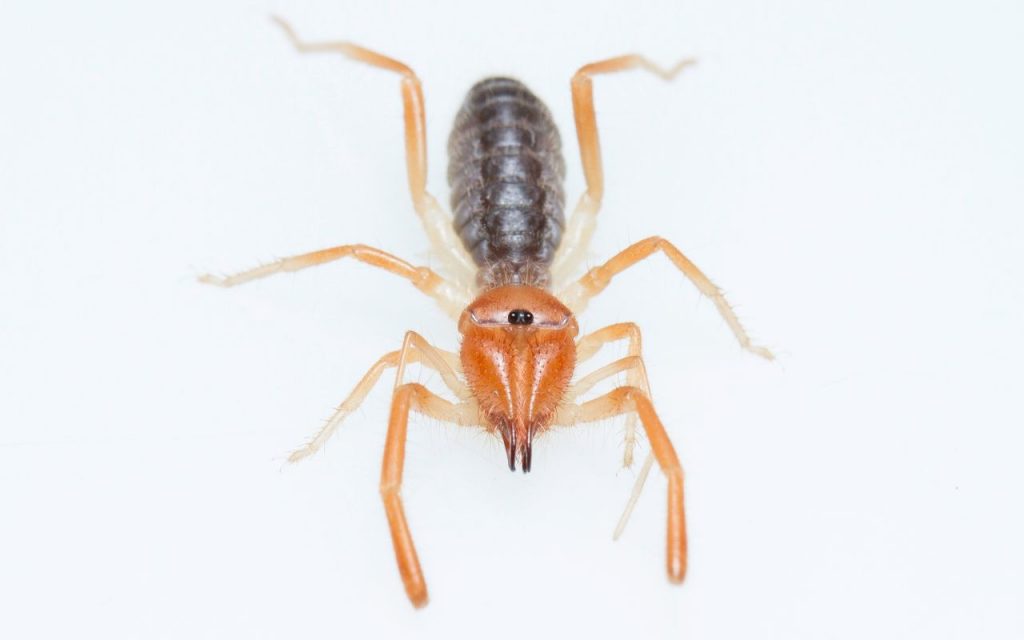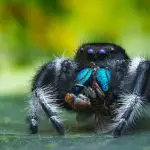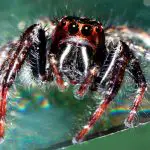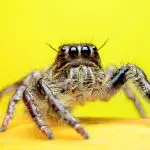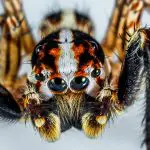It’s not a spider, and it doesn’t have any interest whatsoever in camels. So how did the Camel Spider get its name? Keep reading to find out the answer…
The Camel Spider got its name from a myth surrounding it. People believed that Camel Spiders put camels to sleep or numbed them with their venom then ate them (or part of them). Obviously this is completely false! Camel Spiders do not have venom, and are nowhere near big enough to harm a camel.
The truth about Camel Spiders
Camel spiders are not true spiders. They are non-spider arachnids without venom.
Camel spider is a common name given to a large number of species that belong to the order Solifugae. They are known by several other names like wind scorpions, Egyptian giant solpugids, and sun spiders.
Don’t go by the name as they are not either spiders or scorpions. Because they are arachnids, these creatures display certain traits of spiders as well as scorpions.
Similar to scorpions, camel spiders have a distinctly segmented opisthosoma. The elongated tail and the telson (sting) are missing though.
Just as spiders do, the camel spider uses its front appendages (pedipalps) to look for and hunt its prey. Like other arachnids, the camel spider has eight legs. Their pedipalps are extremely large compared to their body.
These solifugids are voracious predators and tear apart any prey they can get their jaws on.
These mysterious spider-like creatures are surrounded by many myths as most of the species haven’t been studied. The reason for this is difficulties arising in studying their behavior in the wild and their short life in captivity.
People did not take much interest in camel spiders until the early 2000s. Earlier, several myths surrounding these creatures made them an object of fear.
There are many myths related to how poisonous, dangerous, aggressive, and extremely large these critters are. It was also thought they are the fastest and most venomous spiders that ever existed.
Some fascinating facts about camel spiders –
- Camel spiders live a solitary life, except when mating.
- They are nocturnal hunters.
- Female camel spiders lay 50 – 200 eggs at a time
- The female remains inside her burrow till the eggs hatch
- For remaining in the borrow for long she usually stores enough fat.
- Most camel spiders grow only up to two to three inches. The ‘giant camel spider’ grows as long as six inches (including the length of the leg) and is one of the biggest of their kind.
- Camel spiders are not venomous. However, the bite of these creatures can be quite painful.
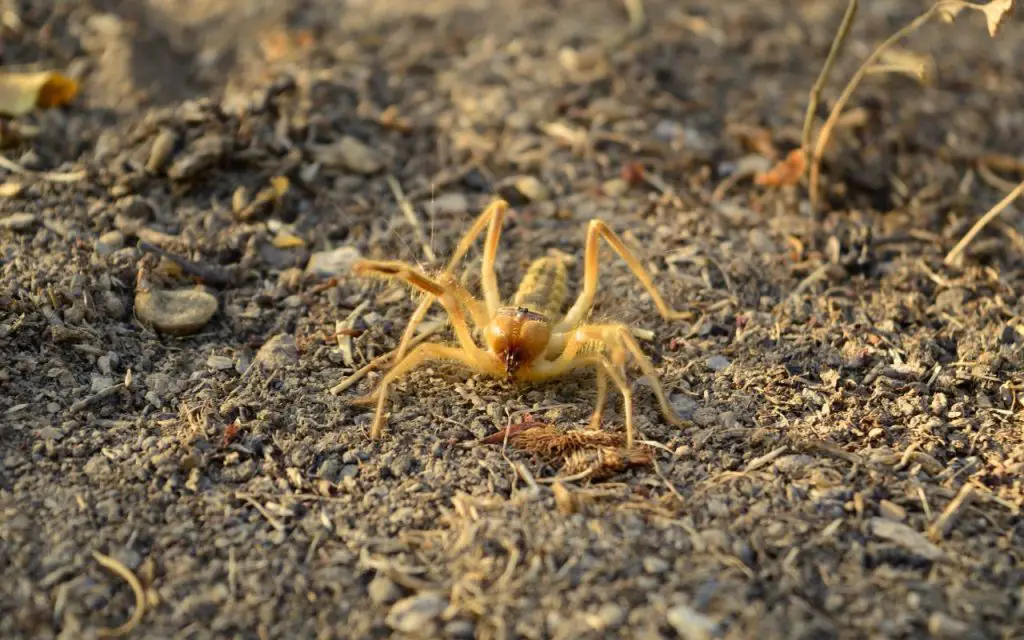
Are camel spiders poisonous?
There are many unbelievable stories about camel spiders that state these creatures are about half the size of humans. They eat camel stomachs and soldiers in the desert while they are asleep.
There is not one iota of truth in these exaggerated stories. These horrifically fascinating creatures are often misunderstood.
Camel spiders are not poisonous or dangerous. These desert-dwelling creatures don’t have venom. Camel spiders use a kind of digestive juice to liquefy the flesh of their prey. That makes it easier for them to eat and digest their food.
What attracts camel spiders?
Camel spiders live in hot, arid regions. To avoid the heat, they remain in their burrows during the day and come out in search of food at night.
Light sources attract camel spiders and they move towards them. Ever hungry spider scorpions are also attracted by food. At any given chance they will rush towards their prey to pinch, kill, and eat them.
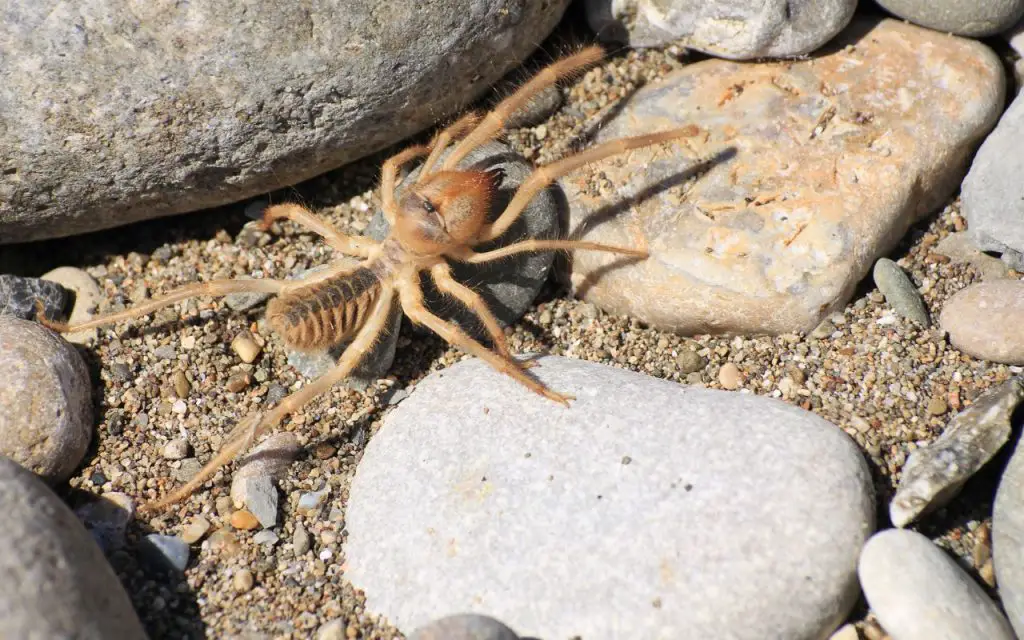
Camel spider scream
Like many other myths and misconceptions about camel spiders, it is also untrue that they scream. Only some of the species make a hissing and chattering sound with their powerful chelicerae and pedipalps or their pinching appendages.
Camel spiders use their chelicerae for stridulation or producing a barely-audible chattering noise. The stiff parts are rubbed together that produce the sound which is often exaggerated as a screech or a scream.
Most camel spiders do not make any sound. These animals avoid the hot sun during the day and seek shelter in a burrow that they dig on the ground.
At night, they come to hunt and once they spot their prey they run toward them with incredible speed. They use their large, unique arachnid appendages to hold and tear apart their prey, making a noise during the process.
The chelicerae or the pinching appendages are equipped with sharp elements for better bite performance. Some even contain tiny teeth.
The chelicerae of two different species often vary in size and formation. These strong pinchers of camel spiders make people compare them to scorpions.
These powerful appendages are used for grabbing, tearing, and cutting into the flesh of the prey. The chelicerae of scorpions are much longer but less powerful compared to a camel spider.
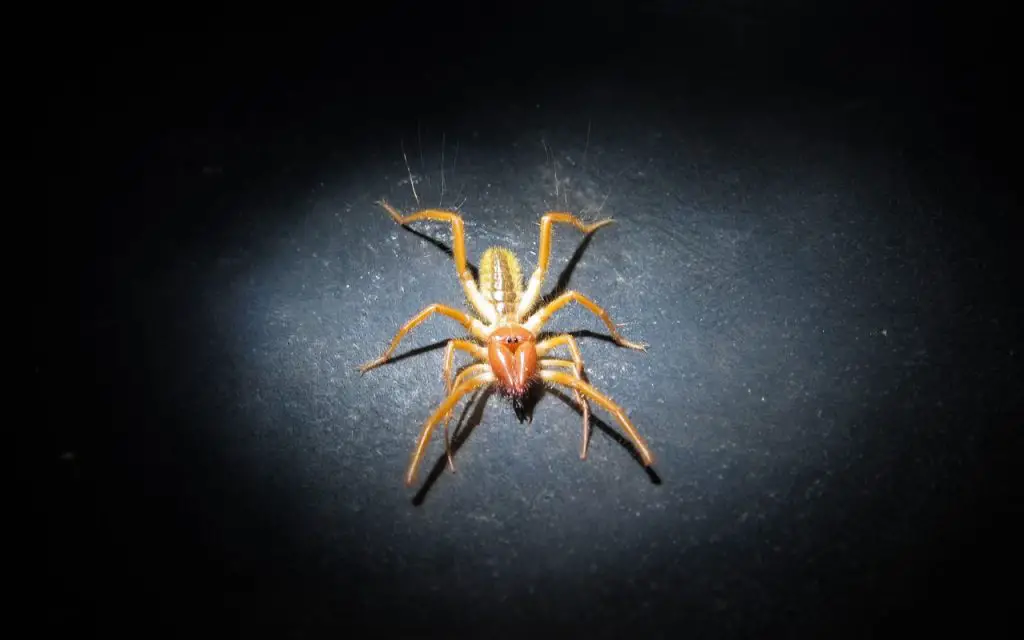
Are camel spiders hostile?
Camel spiders are aggressive, but mostly to their prey. If not disturbed, camel spiders won’t attack or bite. Only when they feel threatened by a human, they may turn hostile and attack.
However, these arachnids are non-venomous. They do not have venom glands to produce any poison.
They do have large jaws but most species of camel spiders can’t break through human skin with their bite. Camel spiders are nocturnal animals and rarely come in contact with humans in their natural habitat in the deserts.
Where do camel spiders live?
There are around 1,100 species the world over. Camel spiders are native to deserts all around the world except Antarctica and Australia.
Camel spiders live in dry, desert, and scrubland regions of the Arabian Peninsula, Egypt, Mexico, the southwestern United States, and other arid regions.
During the day they prefer to live in burrows or hide under rocks to avoid extreme heat. At night they come out in search of prey. Camel spiders are attracted by light and they will run toward the source.
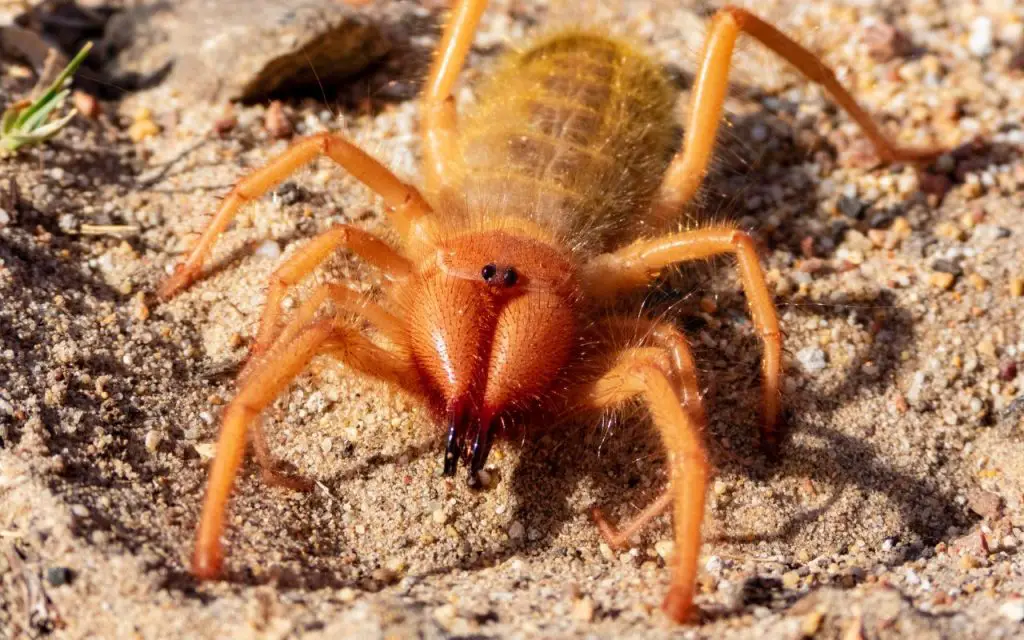
Camel spider size
All camel spiders are not of the same size. Some are 2-3 inches long, whereas some grow up to 5-6 inches considering their long legs.
Their legs are much longer compared to their bodies, making them look bigger.
What is a predator of camel spiders?
Camel spiders are extremely territorial. They are one of the top predators in the arid ecosystems where they live. They even eat predators that are almost the same size as them or even larger. Camel spiders even eat each other.
They are energetic and very fast runners. The intense movement in pursuing their prey also gives them a high rate of metabolism. These creatures are voracious eaters and need constant fueling. Camel spiders eat a lot. Sometimes they massacre ant habitats mercilessly.
However, camel spiders are not without enemies and get eaten by toads, bats, and scorpions.
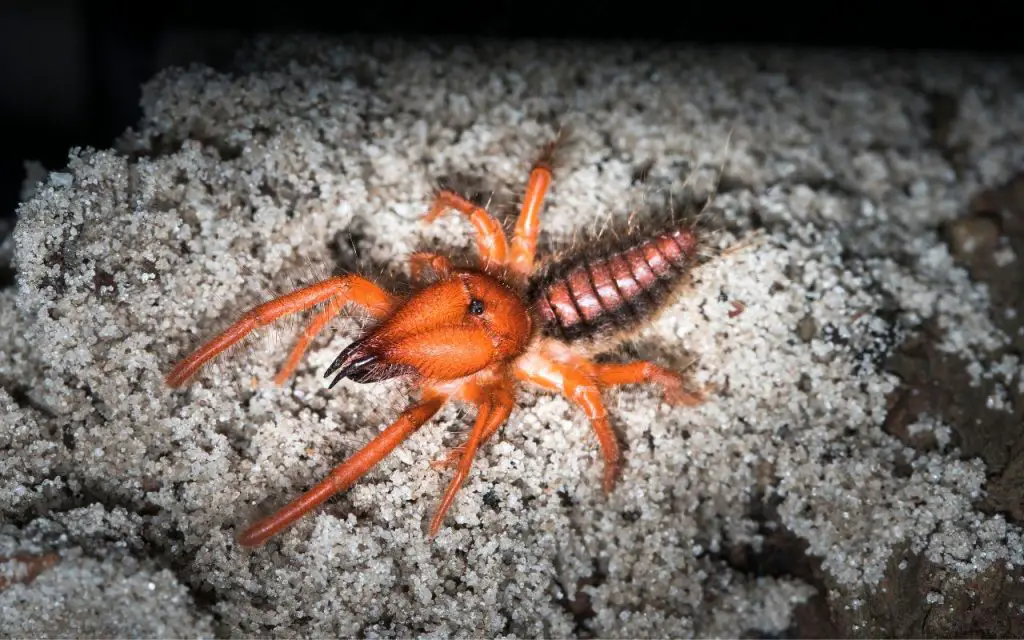
What do camel spiders eat?
Camel spiders are carnivores. In their natural habitat they eat lizards, rodents, small birds, gerbils, termites, snakes, beetles, locusts, wasps, silverfish, spiders, and other small insects.
They are not poisonous but their large, powerful jaws crush their prey completely. These desert demons sometimes eat each other too.
Although called camel spiders, unlike spiders they do not make webs to catch their prey. Instead, they run behind their prey and catch them.
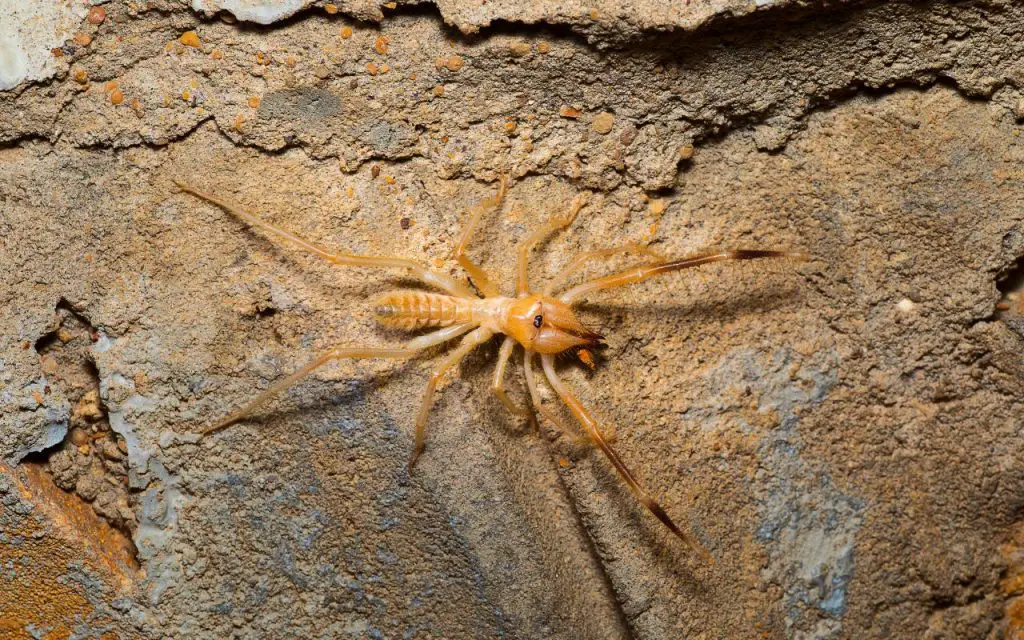
What do you feed camel spiders?
Camel spiders are gaining popularity as pets. When in captivity you can feed them one or two locusts, cricket, mealworms, or cockroaches every day.
Camel spiders are aggressive predators and like to hunt and kill their prey. Serving them live food is good for them as they can act according to their instincts.
How fast are camel spiders?
Solifugids are also known as Kalahari Ferrari, not for nothing. These critters can run very fast.
They can run long distances at a time without stopping for a couple of hours. These ferocious predators are capable of rapid movement and use it to their advantage to catch their prey.
Being insanely fast compared to their size and other critters of their size, camel spiders can run at a speed of up to 10 miles or 16 km per hour. When being chased they can continue to run as long as needed.
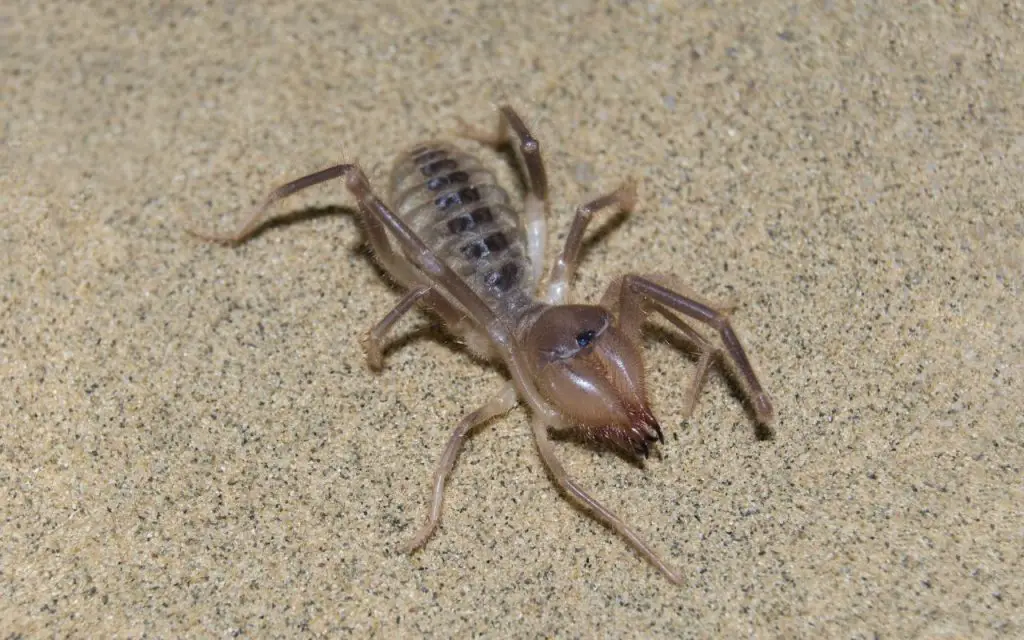
FAQ relating to how did the camel spider get its name
What is another name for camel spider?
The scientific name of camel spiders is Galeodes arabs.
Some other names for these critters are
- Sunspider or sun spider
- Solpugida
- Sun scorpion
- Wind scorpion
- Camel spider
- Red Roman
- Scorpion carrier
- Jerrymunglum
The order Solifugae is derived from a word that means ‘that flee from the sun’ in Latin. The order also has several other similar names like Solpugida, Solpugides, Solpugae, Mycetophorae, and Galeodea.
Some genera of camel spiders are –
- Chanbria
- Eremocosta
- Galeodes
- Eremobates
- Rhagodes
- Hemerotrecha
- Gylippus
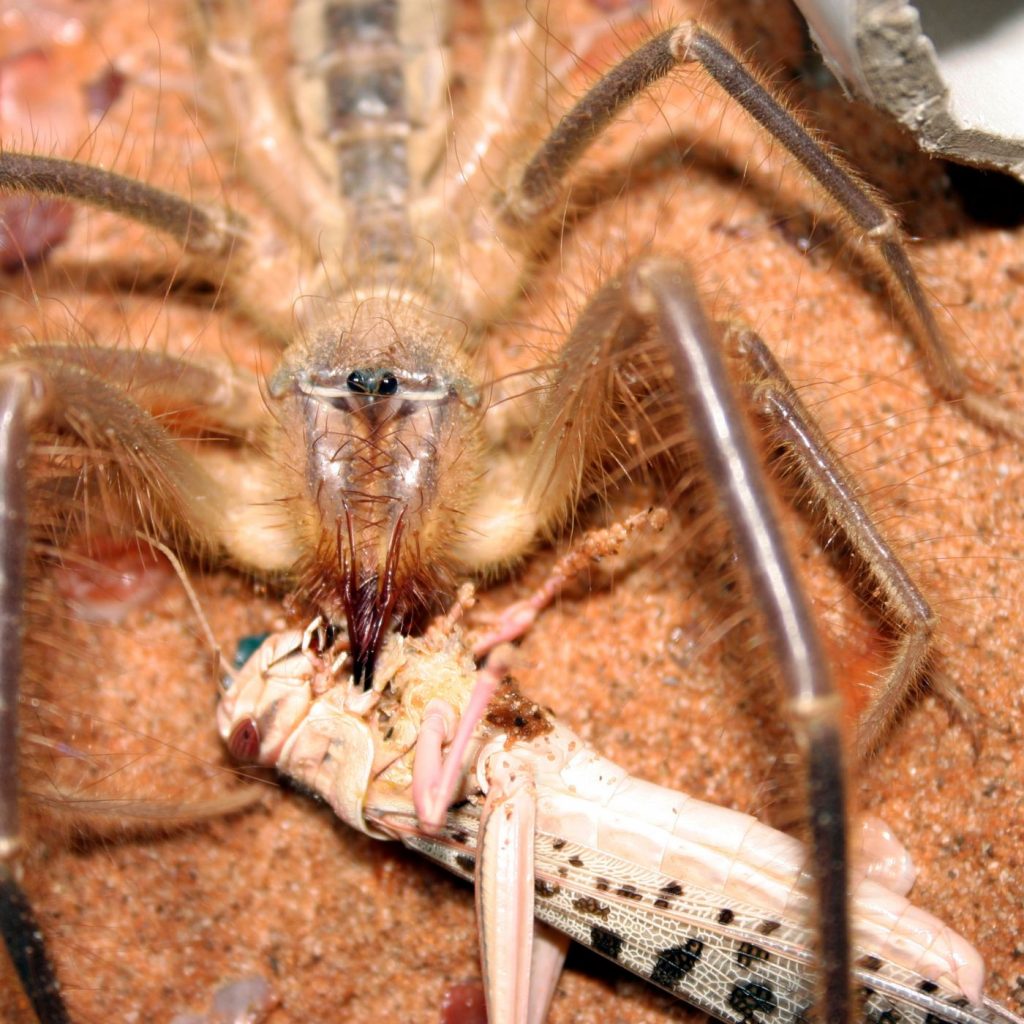
Are camel spiders painful?
Camel spiders do not have venom so they are not deadly to humans. However, a camel spider bite can be painful.
The intense pain from a camel spider bite is due to the powerful jaws. Their large jaws resemble crab pincers and can leave the bitten spot swollen.
The strong bite can cause trauma to the tissue surrounding the bitten area to which the body reacts with normal inflammatory responses. A bite from this critter can also result in some mild or moderate bleeding.
Rinsing the affected area with mild soap or a saline solution and plain water immediately is the initial treatment. It can be followed by some antibiotic cream or ointment.
Monitor the affected area to ensure no infection develops from it. In case of doubt, seek medical help.
What is the fastest spider on earth?
The fastest spider on earth is the Moroccan flic-flac spider (Cebrennus rechenbergi). This desert-dwelling spider can run at a speed of up to 3.8 mph. They reach their top speed when trying to escape predators.
The giant house spider held the record of being the speediest spider until 1987.

